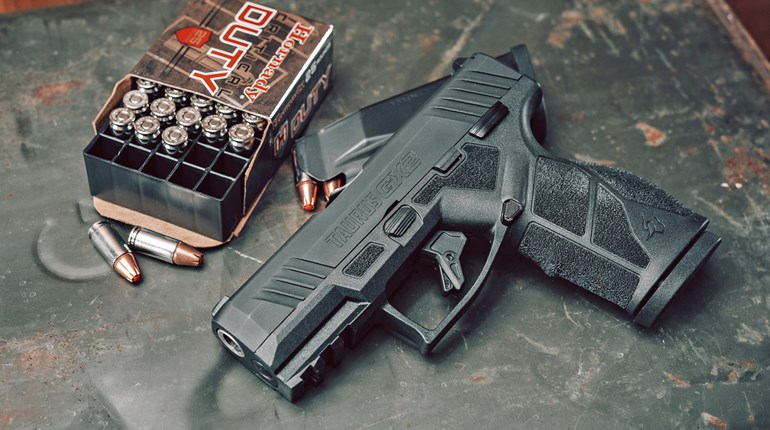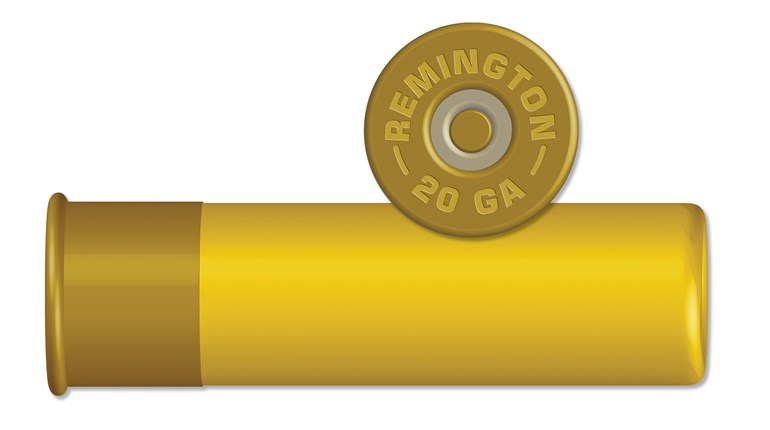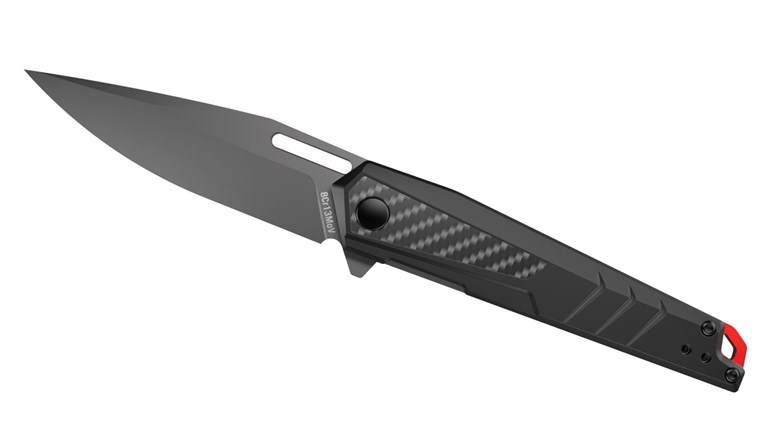
Ruptured brass, as seen above, is a stark reminder of the many factors that can cause an out-of-battery firearm discharge.
Range safety officers at the range/gun shop I frequent were discussing an incident that recently happened involving a customer’s pistol, which they referred to as an out-of-battery discharge. Since I wasn’t part of the conversation, I was left to wonder what they were talking about and what would cause such a thing. It sounded dangerous since parts came off the gun that they were unable to locate, much less get the gun working again.
Rory McGrue Allen, TX
An out-of-battery firing of a cartridge in a semi-automatic pistol can mean multiple things depending on how “in battery” and “out of battery” are defined.
The Sporting Arms and Manufacturers’ Institute (SAAMI) is the organization recognized as setting the standards and definitions for the members of the firearm industry. Its definition of “out of battery” is, “the condition of the breeching mechanism of a firearm not being completely locked or completely closed.”
This is opposed to a gun being “in battery,” which is defined as, “a firearm is in battery when the breeching mechanism is in the proper position for firing.”
Although somewhat left to interpretation, the above definition of “in battery” means the breechface, where the firing pin protrudes through to indent the primer, and the chamber end of the barrel, where the cartridge is held, are positioned as designed so as to contain and control the pressure of the fired cartridge with each discharge.
An out-of-battery firing of the type you mentioned—where parts went missing—indicates the pressure of the fired cartridge wasn’t contained in the chamber of the gun, and was therefore released unintentionally to cause the damage. This may have been improperly classified as an out-of-battery firing by the SAAMI definition if the cartridge case failed, releasing the pressure to unintended places even though the barrel and slide were properly engaged. Most likely the extractor parts were the casualties of the example you mentioned, which is not uncommon when a cartridge case lets go.
Not all manufacturers subscribe to SAAMI definitions and have their own specs which are, in their words, valid with their firearms. The contention is, as long as the barrel and breechface (slide) are in the position to allow the firing pin to sufficiently indent the primer to fire the cartridge, there is sufficient engagement of the parts to contain and control the pressure of the chambered round.
Out-of-battery firings can be initiated by improperly loaded ammunition that have high primers, which detonate prior to receiving a firing-pin strike as they enter the chamber.
I have witnessed various handling issues when loading or unloading a pistol that resulted in what could technically be classified as an out-of-battery discharge since the projectile went into the barrel when the cartridge fired, even though the cartridge case was not fully in the chamber.
One came from unloading a 1911 equipped with an extended ejector in which the shooter was having trouble pulling the slide back to lock it open. After failing on the first try, but partially extracting the live cartridge, the individual mustered enough strength to drive the primer into the ejector, firing the cartridge on the second try. Fortunately, nobody was hurt in the incident, but lessons were learned.
Another example of an out-of-battery firing resulting from poor-handling techniques came from a fellow who insisted on pounding the magazine into his single-stack .45 as hard as he could every time, which caused the slide to release forward automatically. On this occasion, the top cartridge in the magazine passed through the worn feed lips as the magazine was slammed home and the cartridge was fired by the extractor indenting the primer as the slide was closing.
Saying a gun fired “out of battery” can have multiple meanings. Yet, sticking with SAAMI’s definition will keep you on firm ground in a discussion where variables aren’t entertained.





































